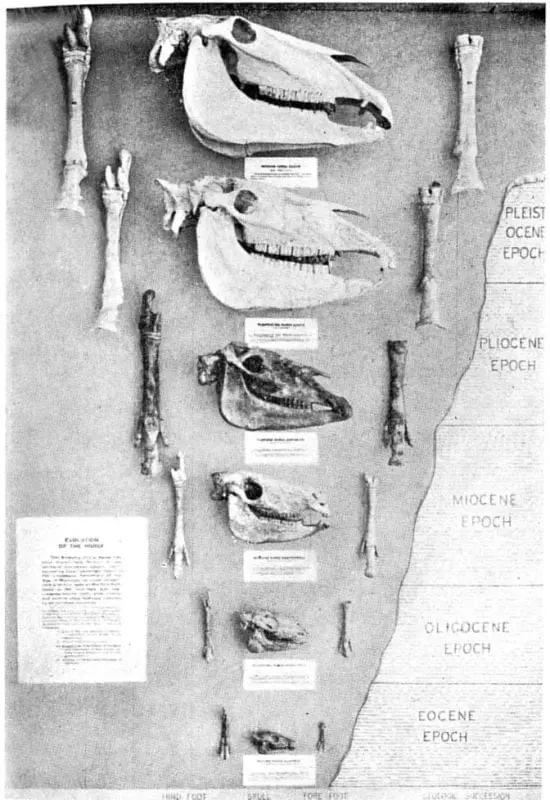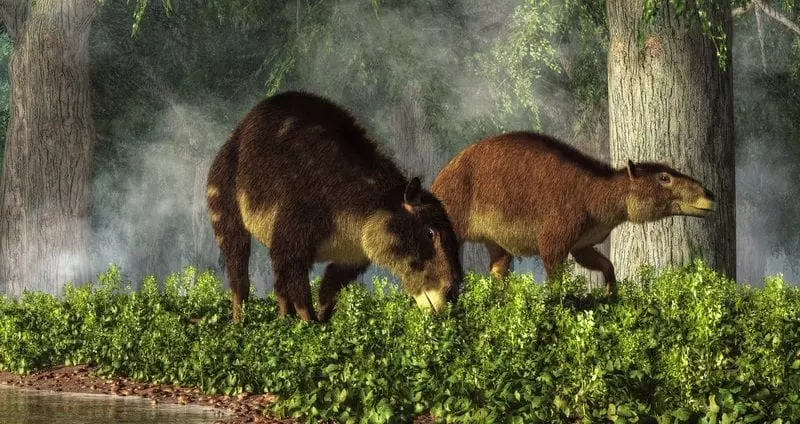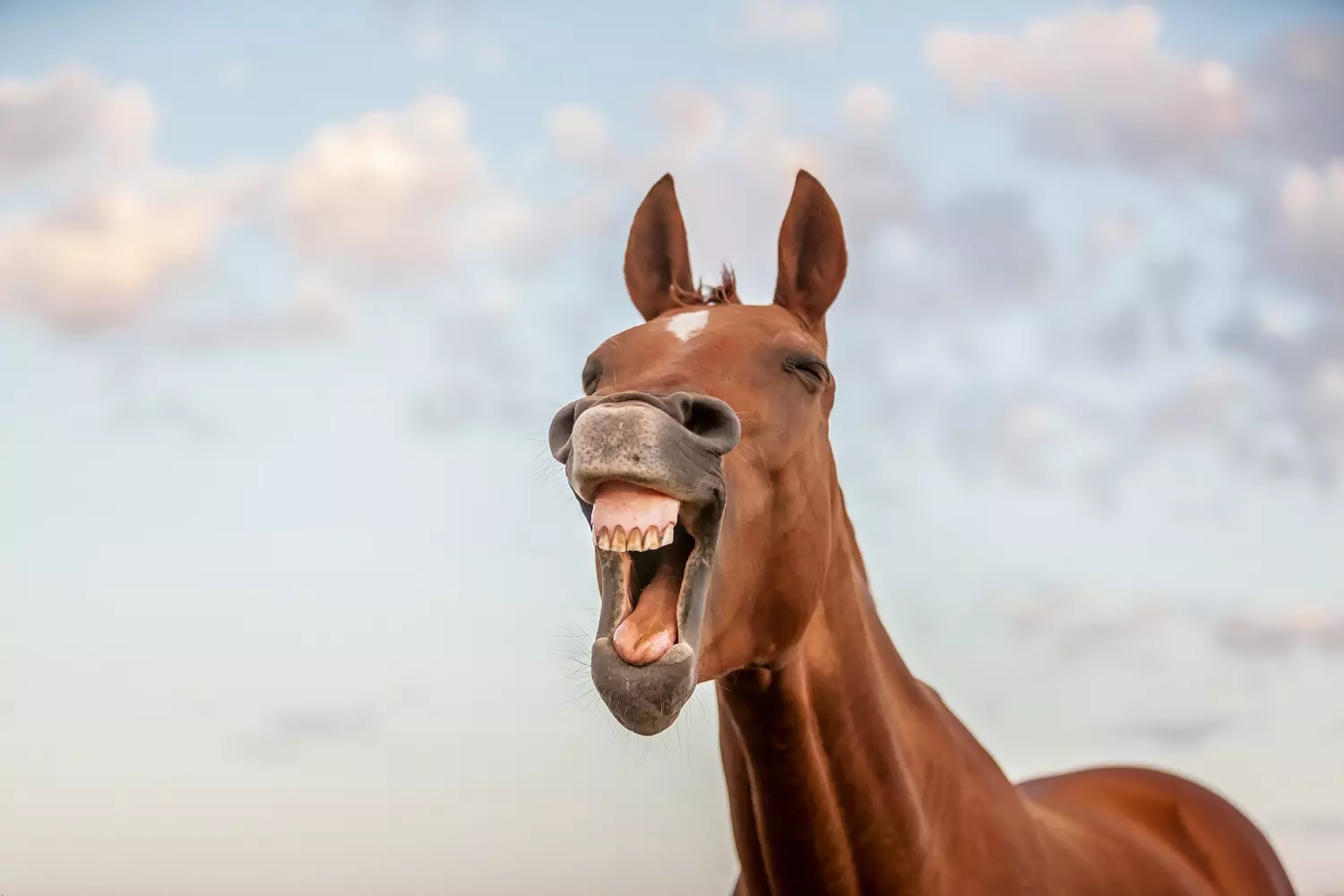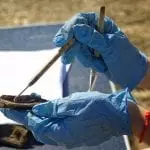We’ve all seen those pictures and museum exhibits about how the horse “evolved over millions of years” from a fox sized, 4-toed creature to a huge single-hoofed creature. It has been touted as one of evolution’s greatest proofs! As confident as they are with it, however, it does not provide definitive proof of evolution if you take a moment to examine it all.
Horses got bigger over time?
The line of horse evolution claims that horses grew dramatically overtime. This is, in actuality, far from the truth. Today, horses come in all kinds of sizes. From the smallest Falabella to the biggest Clydesdale, the size does not determine the advancement of the horse.
Did 4-toed animals really evolve into 3-toed then 1-toed horses?
 Just look at the series and you can see how the 4 toed Eohippus slowly evolved into a 3 toed horse and then the 3 slowly turned into 1! But is this really observed? Let’s take a moment to examine this claim.
Just look at the series and you can see how the 4 toed Eohippus slowly evolved into a 3 toed horse and then the 3 slowly turned into 1! But is this really observed? Let’s take a moment to examine this claim.
To prove horse evolution, we would have to see the horse line, in layers preceding each other in the same area. We’d need horses to have vestigial toes. We’d need a line that’s constant in its changes. So, what do we observe?
- 1 toed and 3 toed horses of different sizes have been found buried together in an eruption in Ashfall Nebraska and in the John Day formation in Oregon. This shows they lived together.
- The supposed “vestigial toes,” or split bones of today’s horses strengthen the leg bones, support the horse’s weight, provide attachment points for muscles, and hold the suspensory ligament. Because of their usefulness, they are found in all equine, with 3 toes or not.
- The horse series is constructed from fossils from different places so this trend is not observed in any single place in nature. The accepted trend comes from North America then Europe, then back to North America.
- The number of ribs varies within the series, fluctuating between 15, 19, and 18. The number of lumbar vertebrae changes from 6 to 8 and back to 6.
- In South America, the fossil records of a separate hoofed animal supposedly show how the animal went from 1 hoof to 3 toes, the exact opposite.
The uniform, continuous transformation of Hyracotherium into Equus, so dear to the hearts of generations of textbook writers never happened in nature. ~George Simpson. Life of the Past. New Haven, CT: Yale University Press (1953), p. 125.
Dr. Niles Eldredge, curator of the American Museum of Natural History, has said an interview published in Darwin’s Enigma: Fossils and Other Problems:
I admit that an awful lot of that has gotten into the textbooks as though it were true. For instance, the most famous example still on exhibit downstairs (in the American Museum) is the exhibit on horse evolution prepared perhaps 50 years ago. That has been presented as literal truth in textbook after textbook. Now I think that that is lamentable, particularly because the people who propose these kinds of stories themselves may be aware of the speculative nature of some of the stuff. But by the time it filters down to the textbooks, we’ve got science as truth and we’ve got a problem.
This means the horse evolution series shown in museums and textbooks is not true, but is still being taught as if it was.
3 Toes vs 1?
But if this series isn’t observed then why were there horses with 3 toes and horses with 1? Variety! God’s creation if full of genetic variety within the kinds. Just look at elephants for example:
- African Elephants: 3 back toes, 2 trunk fingers, large ears, dipped back
- Asian Elephants: 4 back toes, 1 trunk finger, small ears, arched back
Both are elephants, but they have genetic differences. 3-toed horses were just another type of horse! (Antelopes have different hooves per species as well.)
What about the 4 toed “Dawn Horse?”
The Eohippus (meaning ‘dawn horse’), or Hyracotherium, was about the size of a fox. It had 4 toes on its front feet and 3 on the back. While its skull shape was indeed similar to a horse in some ways, it was also different. It had sharp canines and a smooth brain vs a modern horse’s complex brain. Its body was vastly different than the rest too. The first 3 in the horse series (4 toed Eohippus, Orohippus, and Epihippus) have not been connected to the 1st of the 3 toed horses, being 50% smaller than them with no sign of receding 4th toes.
In fact “Hyracotherium” means “Hyrax-like.” A Hyrax is a small mammal that has 4, stumpy, hoof-like toes on the front and 3 on the back. The Eohippus’s skeleton more closely resembles one then that of a horse. Not to say that’s what it is, as it’s been classified to multiple different genera over the years, but the Dawn Horse isn’t very horse-like and cannot be linked to the others. Thus it shouldn’t seriously be considered as the “first horse.”
For further reading about horse evolution, check out:






